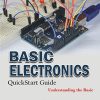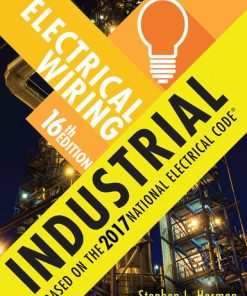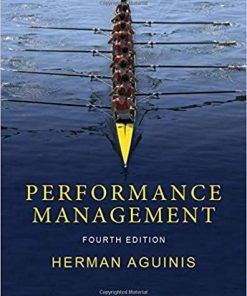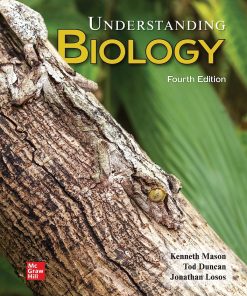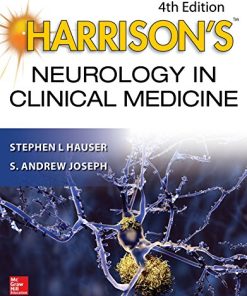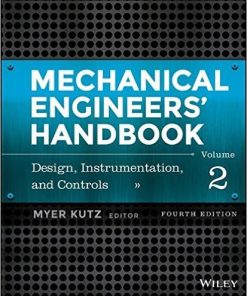Understanding Motor Controls 4th Edition by Stephen Herman 9798214355580
$50.00 Original price was: $50.00.$25.00Current price is: $25.00.
Understanding Motor Controls 4th Edition by Stephen L. Herman – Ebook PDF Instant Download/DeliveryISBN: 9798214355580
Full download Understanding Motor Controls 4th Edition after payment.
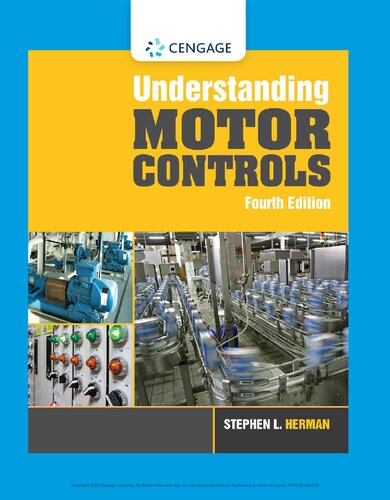
Product details:
ISBN-13 : 9798214355580
Author : Stephen L. Herman
Designed for students with no previous experience in motor controls, Herman’s UNDERSTANDING MOTOR CONTROLS, 4E introduces basic principles and guides readers from learning about common motor control components to understanding how to use components in motor control circuits. Numerous up-to-date illustrations depict troubleshooting circuits while thorough explanations detail basic types of meters and test equipment to troubleshoot control circuits. An updated chapter on installing motors corresponds with the National Electrical Code and clearly illustrates how to select overload heater sizes. Using actual motor control components, hands-on laboratory experiments enable students to practice the concepts they’ve learned. These student-friendly experiments start with simple circuits before advancing to more complicated circuits involving timing relays and auto-transformer starters.
Understanding Motor Controls 4th Table of contents:
S-1. General Safety Rules
Never Work on an Energized Circuit If the Power Can Be Disconnected
Think
Avoid Horseplay
Do Not Work Alone
Work with One Hand When Possible
Learn First Aid
Avoid Alcohol and Drugs
S-2. Effects of Electric Current on the Body
S-3. On the Job
OSHA
Hazardous Materials
Employer Responsibilities
MSDS
Trenches
Confined Spaces
Lockout and Tagout Procedures
S-4. Protective Clothing
Head Protection
Eye Protection
Hearing Protection
Fire-Retardant Clothing
Gloves
Safety Harness
S-5. Ladders and Scaffolds
Rolling Scaffolds
Hanging or Suspended Scaffolds
Straight Ladders
Step Ladders
S-6. Fires
S-7. Ground-Fault Circuit Interrupters
GFCI Devices
S-8. Grounding
S-9. Review Questions
Section 1. Basic Control Circuits and Components
Chapter 1. General Principles of Motor Control
Installation of Motors and Control Equipment
Power Source
Motor Connections
Controller Type
Environment
Codes and Standards
Types of Control Systems
Functions of Motor Control
Starting
Stopping
Jogging or Inching
Speed Control
Motor and Circuit Protection
Surge Protection
Safety
Review Questions
Chapter 2. Symbols and Schematic Diagrams
Sensing Devices
Limit Switches
Float, Pressure, Flow, and Temperature Switches
Coils
Timed Contacts
Contact Symbols
Other Symbols
IEC Symbols
Review Questions
Chapter 3. Manual Starters
Manual Push Button Starters
Manual Starter with Low Voltage Release
Troubleshooting
Review Questions
Chapter 4. Overload Relays
Dual Element Fuses
Thermal Overload Relays
Solder Melting Type
Bimetal Strip Overload Relay
Three-Phase Overloads
Magnetic Overload Relays
Electronic Overload Relays
Dashpot Overload Relays
Overload Contacts
Protecting Large Horsepower Motors
Example 1
Example 2
Example 3
Review Questions
Chapter 5. Relays, Contactors, and Motor Starters
Relays
Bridge Type Relay
Electromagnet Construction
Core Losses
Shading Coils
Control Relay Types
Solid-State Relays
Contactors
Load Contacts
Vacuum Contactors
Mechanically Held Contactors and Relays
Sequence of Operation
Mercury Relays
Motor Starters
NEMA and IEC
Motor Control Centers
Current Requirements
Review Questions
Chapter 6. The Control Transformer
Grounded and Floating Control Systems
Transformer Fusing
Review Questions
Section 2. Basic Control Circuits
Chapter 7. START–STOP Push Button Control
Review Questions
Chapter 8. Multiple Push Button Stations
Review Questions
Chapter 9. Forward–Reverse Control
Review Questions
Chapter 10. Jogging and Inching
Inching Controls
Review Questions
Chapter 11. Timing Relays
Pneumatic Timers
Clock Timers
Cam Or Sequence Timers
Electronic Timers
Connecting 11-Pin Timers
Construction of a Simple Electronic Timer
Making An on-Delay Timer Function As An off-Delay Timer
Review Questions
Chapter 12. Sequence Control
Stopping the Motors in Sequence
Circuit Operation
Timed Starting and Stopping of Three Motors
Review Questions
Section 3. Sensing Devices
Chapter 13. Pressure Switches and Sensors
Differential Pressure
Typical Application
Circuit Operation
Connecting the Circuit
Pressure Sensors
Review Questions
Chapter 14. Float Switches and Liquid Lever Sensors
Mercury Bulb Float Switch
The Bubbler System
Microwave Level Gauge
Review Questions
Chapter 15. Flow Switches
Review Questions
Chapter 16. Limit Switches
Micro Limit Switches
Subminiature Micro Switches
Limit Switch Application
Review Questions
Chapter 17. Temperature Sensing Devices
Expansion of Metal
Hot-Wire Starting Relay
The Mercury Thermometer
The Bimetal Strip
Thermocouples
Resistance Temperature Detectors
Thermistors
The PN Junction
Expansion Due to Pressure
Review Questions
Chapter 18. Hall Effect Sensors
Principles of Operation
Hall Generator Applications
Motor Speed Sensor
Position Sensor
Hall Effect Limit Switches
Current Sensor
Linear Transducers
Review Questions
Chapter 19. Proximity Detectors
Applications
Metal Detectors
Mounting
Capacitive Proximity Detectors
Ultrasonic Proximity Detectors
Review Questions
Chapter 20. Photodetectors
Applications
Types of Detectors
Photovoltaic
Photoemissive Devices
Photoconductive Devices
Mounting
Photodetector Application
Review Questions
Chapter 21. Reading Large Schematic Diagrams
Review Questions
Chapter 22. Installing Control Systems
Component Location
Point-to-Point Connection
Using Terminal Strips
Review Questions
Section 4. Starting and Braking Methods
Chapter 23. Across-the-Line Starting
Direct Current Motors
Review Questions
Chapter 24. Resistor and Reactor Starting for AC Motors
Resistor Starting
Reactor Starting
Step Starting
Review Questions
Chapter 25. Autotransformer Starting
Open and Closed Transition Starting
Review Questions
Chapter 26. Wye-Delta Starting
Wye-Delta Starting Requirements
Dual Voltage Connections
Connecting the Stator Leads
Closed Transition Starting
Overload Setting
Review Questions
Chapter 27. Part Winding Starters
Overload Protection
Dual Voltage Motors
Motor Applications
Three-Step Starting
Automatic Shutdown
Review Questions
Chapter 28. Direct Current Motors
Field Windings
Armature Windings
Series Motors
Shunt Motors
Compound Motors
Field Loss Relay
External Shunt Field Control
Controlling Compounding
Cumulative and Differential Compounding
Testing the Motor for Cumulative or Differential Compounding
Direction of Rotation
Determining the Direction of Rotation
Review Questions
Chapter 29. Single-Phase Motors
Centrifugal Switch
Hot-Wire Starting Relay
Current Relay
Solid-State Starting Relay
Potential Starting Relay
Dual Voltage Motors
Reversing the Direction of Rotation
Multispeed Motors
Multispeed Fan Motors
Review Questions
Chapter 30. Braking
Mechanical Brakes
Dynamic Braking
Dynamic Braking for Direct Current Motors
Dynamic Braking for Alternating Current Motors
Plugging
Manual Plugging
Review Questions
Section 5. Wound Rotor, Synchronous, and Consequent Pole Motors
Chapter 31. Wound Rotor Motors
Manual Control of a Wound Rotor Motor
Timed Controlled Starting
Wound Rotor Speed Control
Frequency Control
Review Questions
Chapter 32. Synchronous Motors
Starting a Synchronous Motor
Excitation Current
The Brushless Exciter
Direct Current Generator
Automatic Starting for Synchronous Motors
The Field Contactor
Out-of-Step Relay
The Polarized Field Frequency Relay
Power Factor Correction
Applications
Review Questions
Chapter 33. Consequent Pole Motors
Three-Speed Consequent Pole Motors
Four-Speed Consequent Pole Motors
Review Questions
Section 6. Variable Speed Drives
Chapter 34. Variable Voltage and Magnetic Clutches
Voltage Control Methods
Magnetic Clutches
Eddy Current Clutches
Review Questions
Chapter 35. Solid-State DC Motor Controls
The Shunt Field Power Supply
The Armature Power Supply
Voltage Control
Field Failure Control
Current Limit Control
Speed Control
Review Questions
Chapter 36. Variable Frequency Control
Alternator Control
Solid-State Control
Some Related Problems
IGBTs
Advantages and Disadvantages of IGBT Drives
Inverter Rated Motors
Variable Frequency Drives Using SCRs and GTOs
Features of Variable Frequency Control
Review Questions
Section 7. Motor Installation
Chapter 37. Motor Installation
Motor Nameplate Data
Manufacturer’s Name
Horsepower
RPM
Frequency
Phases
Motor Type
Frame
Voltage
Full Load Current
Enclosure
Duty Cycle
Temperature Rise
Service Factor
Locked Rotor Code Letter
NEMA Design Code
Motor Efficiency
Insulation Classification
Model and Serial Numbers
Connection Diagrams
Determining Motor Current
Direct Current Motors
Single-Phase AC Motors
Two-Phase Motors
Three-Phase Motors
Determining Conductor Size for a Single Motor
Termination Temperature
Overload Size
Determining Locked-Rotor Current
Short-Circuit Protection
Starter Size
Example Problems
Example 1
Example 2
Multiple Motor Calculations
Motor #1 Calculation
Motor #2 Calculation
Motor #3 Calculation
Main Feeder Calculation
Review Questions
Section 8. Programmable Logic Controllers
Chapter 38. Programmable Logic Controllers
Differences between PLCs and PCs
Basic Components
The Power Supply
The CPU
The Programming Terminal
The I/O Rack
I/O Capacity
The Input Module
The Output Module
Internal Relays
Timers and Counters
Off-Delay Circuit
Review Questions
Chapter 39. Programming a PLC
Circuit Operation
Developing a Program
Converting the Program
Entering a Program
Programming Considerations
Review Questions
Chapter 40. Analog Sensing for Programmable Logic Controllers
Installation
Keep Wire Runs Short
Plan the Route of the Signal Cable
Use Shielded Cable
Grounding
The Differential Amplifier
Review Questions
Section 9. Developing Control Circuits and Troubleshooting
Chapter 41. Developing Control Circuits
Developing Control Circuits
Circuit #1: Two Pump Motors
Circuit #2: Speed Control of a Wound Rotor Induction Motor
Circuit #3: An Oil Heating Unit
Review Questions
Chapter 42. Troubleshooting
Safety Precautions
Voltmeter Basics
Test Procedure Example 1
Test Procedure Example 2
Test Procedure Example 3
Motors
Windings
Motor Overheating
Mechanical
Poor Ventilation
Improper Wire Size
Overload Heaters Not Sized Correctly
Motor Undersized for the Load
Over and Under Voltage
Unbalanced Voltage
Review Questions
Chapter 43. Direct Drives and Pulley Drives
Directly Coupled Drive Installation
Laser-Computer Method of Equipment Alignment
Pulley Drives
Installation
Pulley Speeds
Review Questions
Chapter 44. Semiconductors
Conductors
Insulators
Semiconductors
Review Questions
Chapter 45. The PN Junction
The PN Junction
Review Questions
Chapter 46. The Zener Diode
The Zener Diode
Review Questions
Chapter 47. Light-Emitting Diodes and Photodiodes
LED Characteristics
Testing LEDs
LED Lead Identification
Seven-Segment Displays
Connecting the LED in a Circuit
Photodiodes
Photovoltaic
Photoconductive
LED Devices
Review Questions
Chapter 48. The Transistor
The Transistor
Review Questions
Chapter 49. The Unijunction Transistor
The Unijunction Transistor
Review Questions
Chapter 50. The SCR
The SCR in a DC Circuit
The SCR in an AC Circuit
Phase Shifting the SCR
Testing the SCR
Review Questions
Chapter 51. The Diac
The Diac
Review Questions
Chapter 52. The Triac
The Triac Used as an AC Switch
The Triac Used for AC Voltage Control
Phase Shifting the Triac
Testing the Triac
Review Questions
Chapter 53. The 555 Timer
Circuit Applications
The Oscillator
The On-Delay Timer
Review Questions
Chapter 54. The Operational Amplifier
Basic Circuits
Circuit Applications
The Level Detector
The Oscillator
The Pulse Generator
Review Questions
Section 10. Laboratory Exercises
Exercise 1. Basic Control
Materials Needed
Practical Exercise
Review Questions
Exercise 2. START–STOP Push Button Control
Materials Needed
Numbering the Components
Connecting the Wires
Connecting a START–STOP Push Button Control Circuit
Review Questions
Exercise 3. Multiple Push Button Stations
Materials Needed
Developing the Wiring Diagram
Connecting the Circuit
Review Questions
Exercise 4. Forward–Reverse Control
Materials Needed
Interlocking
Developing a Wiring Diagram
Wiring the Circuit
Review Questions
Exercise 5. Sequence Control
Materials Needed
A Second Circuit for Sequence Control
Developing a Wiring Diagram
Connecting the Circuit
Review Questions
Exercise 6. Jogging Controls
Materials Needed
Other Jogging Circuits
Connecting Jogging Circuits
Connecting Circuit 1
Connecting the Second Run-Jog Circuit
Connecting the Third Run-Jog Circuit
Connecting the Tube Socket
Review Questions
Exercise 7. On-Delay Timers
Materials Needed
Timed Contacts
Instantaneous Contacts
Control Relays Used with Timers
The First Circuit
Connecting Circuit 1
Discussing Circuit 2
Connecting Circuit 2
Review Questions
Exercise 8. Off-Delay Timers
Materials Needed
Example Circuit 1
Example Circuit 2
Example Circuit 3
Using Electronic Timers
Amending Circuit 1
Amending Circuit 2
Connecting the First Circuit
Connecting the Second Circuit
Review Questions
Exercise 9. Designing a Printing Press Circuit
Materials Needed
Addressing a Potential Problem
Connecting the Circuit
Review Questions
Exercise 10. Sequence Starting and Stopping for Three Motors
Materials Needed
Designing the Second Part of the Circuit
Modifying the Circuit
Connecting the Circuit
Review Questions
Exercise 11. Hydraulic Press Control
Materials Needed
Connecting the Circuit
Testing the Circuit
Review Questions
Exercise 12. Design of Two Flashing Lights
Materials Needed
Review Questions
Exercise 13. Design of Three Flashing Lights
Materials Needed
Procedure
Review Questions
Exercise 14. Control for Three Pumps
Materials Needed
Determining What the Circuit Does
List the Components
Describe the Components
Describing the Circuit Operation
Review Questions
Exercise 15. Oil Pressure Pump Circuit for a Compressor
Materials Needed
Listing the Components
Describe the Components
Circuit Operation
Connecting the Circuit
Review Questions
Exercise 16. Autotransformer Starter
Materials Needed
Obtaining Enough Contacts
Circuit Operation
Connecting the Circuit
Review Questions
People also search for Understanding Motor Controls 4th:
understanding motor controls 4th edition pdf
understanding motor controls 4th edition
understanding motor controls pdf
understanding motor controls 4th edition answer key
understanding motor controls book
Tags: Understanding, Motor Controls, Stephen Herman, experience, motor controls
You may also like…
Housekeeping & Leisure - Interior Design & Decoration
(Ebook PDF) Electrical Wiring Industrial 16th Edition by Stephen Herman 9798214342085 full chapters
Biology and other natural sciences - Biology
Biology and other natural sciences - Biology
Jurisprudence & Law - Foreign & International Law
U.S. Export Controls and Economic Sanctions 4th Edition Eric L. Hirschhorn
Medicine - Neurology
Uncategorized



